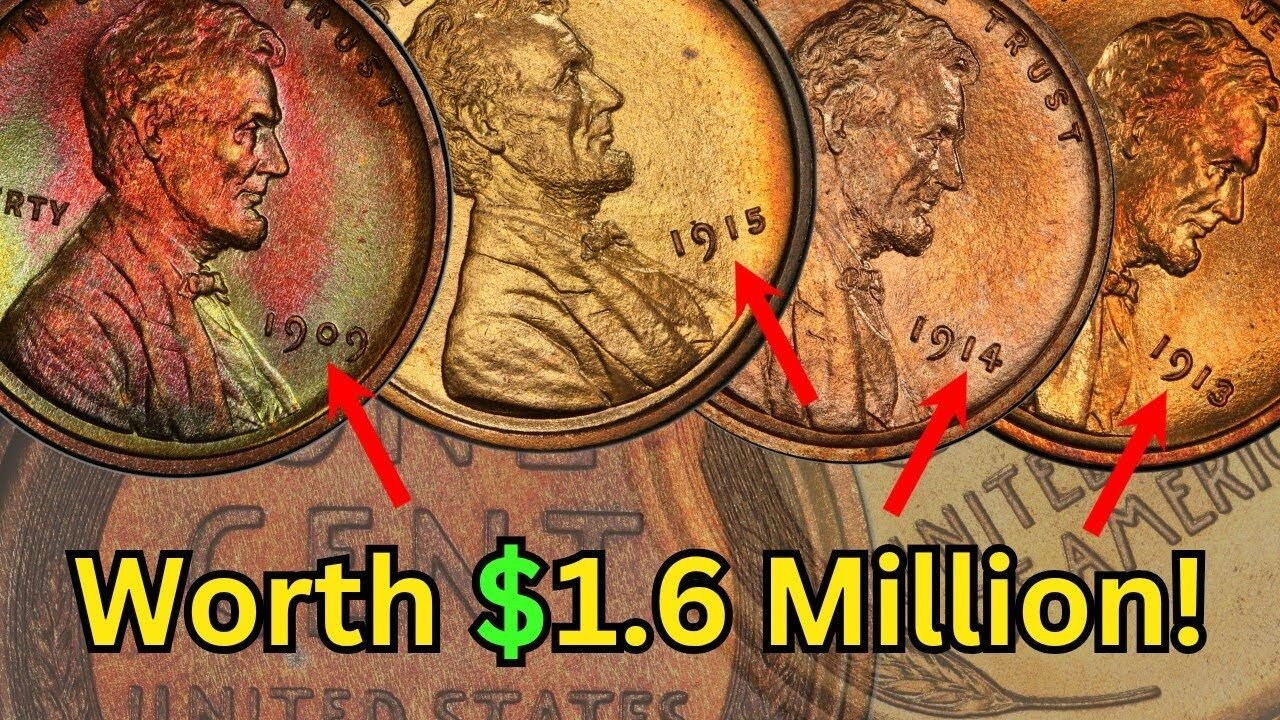Lincoln Wheat Penny Imagine digging through your spare change after a grocery run and pulling out a tiny copper coin worth more than a luxury car. Sounds like a dream? It’s real! A super-rare Lincoln Wheat Penny recently made headlines by selling for a jaw-dropping $12.6 million at auction.
This isn’t some ancient treasure from a pirate ship—it’s a everyday penny from the early 1900s that slipped into circulation and stayed hidden for over a century. In this guide, we’ll break down why this coin is so valuable, how it ended up in someone’s pocket, and tips to spot your own potential fortune. If you’re a coin collector or just love a good underdog story, keep reading to uncover the secrets of the world’s most expensive penny.
Lincoln Wheat Penny So Special
The Lincoln Wheat Penny is one of America’s most loved coins, first minted in 1909 to honor President Abraham Lincoln’s 100th birthday. Designed by artist Victor David Brenner, it features Lincoln’s profile on the front and two wheat stalks on the back—hence the “Wheat” nickname. Over 100 billion of these pennies were made until production stopped in 1958, so they’re common… except for the rare ones.
What turns a simple cent into a millionaire-maker? It’s all about mistakes, low numbers, and perfect condition. The $12.6 million penny in question is the ultra-rare 1909-S VDB version. Here’s why it’s a big deal in simple terms:
Key Features of the Record-Breaking Penny
- Mint Mark: Struck in San Francisco (the “S” mark), with only about 484,000 made.
- Designer’s Initials: Brenner’s “VDB” on the back—most were removed early on due to controversy, making surviving ones scarce.
- Condition: Graded MS-67+ (near-perfect, with original red luster), untouched by time or fingers.
This combo makes it the “holy grail” for collectors. Unlike boring modern coins, these hold stories of history, like the Roaring Twenties or the Great Depression.
The Thrilling Discovery Story: From Junk Drawer to Auction Glory
Picture this: In 2023, a retired teacher from Ohio named Susan was sorting through her late husband’s coin collection. Tucked in a dusty album was a shiny 1909 penny that looked a bit off—faint “VDB” letters and an “S” under the date. Skeptical, she took it to a local coin shop. The dealer nearly dropped his coffee: “This could be worth millions!”
After expert checks at PCGS (Professional Coin Grading Service), it was confirmed—a top-tier 1909-S VDB in stunning shape. Susan consigned it to Heritage Auctions, where bidders from around the world went wild. On a crisp autumn day, the hammer fell at $12.6 million, including fees. Susan, now in her 70s, plans to donate part to charity and fund her grandkids’ education. Talk about a penny for your thoughts turning into a life-changer!
Penny Worth $12.6 Million
Value in rare coins boils down to rarity, demand, and condition—think of it like a vintage baseball card that Babe Ruth signed. Lincoln Wheat Penny For the Lincoln Wheat Penny, errors and low mintage drive prices sky-high. The 1909-S VDB is the rarest, with fewer than 500 known examples.
Here’s a quick comparison table of top Lincoln Wheat Penny values to put $12.6 million in perspective:
| Coin Variety | Year & Key Feature | Rarity (Known Examples) | Auction Record (USD) | Why It’s Valuable |
|---|---|---|---|---|
| 1909-S VDB | 1909, San Francisco mint with VDB initials | ~500 | $12.6 Million (2023) | Ultra-low mintage; design controversy led to quick changes |
| 1914-D | 1914, Denver mint | ~1,200 | $1.1 Million (2022) | Extremely low production during WWI shortages |
| 1922 Plain | 1922, No “D” mint mark (error) | ~500,000 (but many worn) | $500,000 (2021) | Minting mistake hid the Denver mark |
| Common 1909 | 1909, Philadelphia (no mint mark) | Billions | $10–$50 (circulated) | Everyday version; no rarity boost |
| 1955 Doubled Die | 1955, Doubled text error | ~20,000 | $125,000 (2019) | Obvious printing flaw catches the eye
Lincoln wheat penny value
|
As you can see, condition is king—a beat-up penny might fetch $100, but a pristine one? Millions.Lincoln Wheat Penny Demand from wealthy collectors and museums keeps prices climbing.
How to Hunt for Your Own Rare Lincoln Wheat Penny in Circulation
Don’t toss that change jar yet! Rare pennies still pop up because old coins recirculate in banks.Lincoln Wheat Penny Here’s your easy starter guide:
Step-by-Step Coin Hunting Tips
- Grab a Magnifier: Look for wheat ears on the back—only pre-1959 pennies qualify.
- Check Dates and Marks: Focus on 1909, 1914, 1922. Spot “S” (San Francisco) or “D” (Denver) under the date.
- Hunt Errors: Blurry letters? Doubled images? Jackpot potential.
- Preserve It: Don’t clean—handle by edges to keep shine.
- Get It Graded: Use services like PCGS or NGC for official value.
Pro tip: Old bank rolls from rural branches often hide treasures. In 2024 alone, three Lincoln Wheat Pennies over $100,000 surfaced from circulation. Your next coffee fund could be a fortune!
Why Rare Coins Like This Matter
Beyond the money, Lincoln Wheat Pennies connect us to history. Minted during America’s industrial boom, they rode through world wars and economic crashes in pockets worldwide.Lincoln Wheat Penny Finding one today feels like time travel—a reminder that value hides in plain sight.
As coin expert David Hall from PCGS says, “These aren’t just metal; they’re mini time capsules.” With inflation and digital money rising, physical rarities like this penny are hot investments, up 20% yearly on average.
Ready to start your hunt? Share your finds in the comments— who knows, your story could be next!





